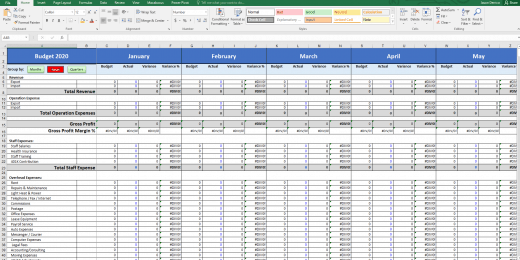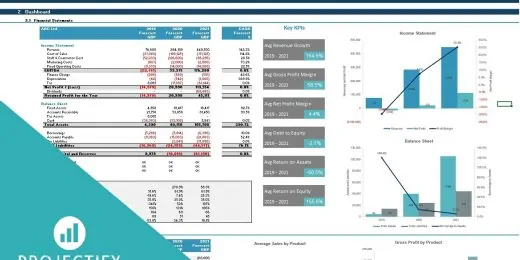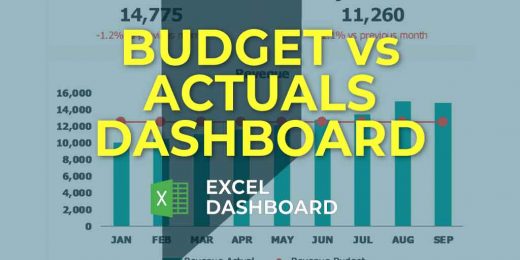Mastering the Art of Financial Life Plan: A Closer Look

Mastering the art of financial life planning involves strategic personal finance management and setting clear goals. It requires a meticulous approach to aligning one’s finances with life aspirations.
Creating a robust financial life plan is a vital step toward achieving monetary security and fulfilling life goals. This process transcends basic budgeting to encompass a comprehensive strategy for earning, saving, investing, and spending. It demands a deep understanding of personal values, financial situations, long-term objectives, and the discipline to adhere to a well-structured financial blueprint.
A strong financial life plan not only secures your current fiscal health but also paves the way for a prosperous future. To master this art, one must educate oneself on financial principles, seek expert advice when necessary, and remain adaptable to life’s ever-changing circumstances. This proactive approach ensures resilience against financial challenges and a steady march towards one’s desired future.
The Essence Of A Financial Life Plan
A financial life plan goes beyond mere budgeting to embrace personal aspirations and goals. It aligns monetary decisions with what truly matters in your life, ensuring a holistic approach to wealth management.
Creating a financial life plan is like designing a road map for your money. It guides you through life’s twists and turns. With a plan, you can achieve your dreams and secure your future. Let’s delve deeper and understand what financial life planning really means for you.
Defining Financial Life Planning
Financial life planning is not just about numbers. It’s about lining up your monetary decisions with your deepest values and goals. It’s a process that combines financial expertise with your vision for life. Here are key aspects:
- Understanding your current financial situation: This is the first step to take control of your finances.
- Setting clear, achievable goals: Short-term or long, these should reflect what you truly want in life.
- Making informed decisions: This is about making choices that align with your plan.
- Adapting to changes: Life is unpredictable. A good plan allows for flexibility.
Benefits Of A Strategic Financial Approach
With a strategic financial plan, benefits are plentiful:
- Better money management leads to less stress.
- Clear direction helps in making confident financial choices.
- Improved readiness for emergencies keeps you secure.
- Increased savings provide for a comfortable retirement.
- Greater understanding of investments grows your wealth.
Creating and following a financial life plan can put you on the path to success. It gives freedom to enjoy life today, while planning for tomorrow. Start planning today and be ready for whatever comes your way!
Setting Solid Foundations
Setting Solid Foundations is crucial to mastering your financial life plan. Like building a house, firm financial grounds ensure durability and growth.
Assessing Current Financial Health
To build a solid financial foundation, first understand your current financial status. Begin with a list of assets and liabilities. Analyze monthly income and spending.
Use a table to clearly view important figures.
| Assets | Liabilities |
|---|---|
| Savings Account | Credit Card Debt |
| Investments | Student Loans |
| Real Estate | Mortgage |
After listing, calculate your net worth. Examine any debt and plan its reduction.
Crucial Financial Habits To Cultivate
Building healthy financial habits is a cornerstone to a strong foundation.
- Create a budget – track and manage your money.
- Save regularly – aim for a saving that’s comfortable.
- Invest wisely – start small but start now.
- Limit debt – use credit cards responsibly.
- Plan for the future – consider retirement and emergencies.
Track your spending with budgeting apps.
Set aside money into a savings account monthly.
Explore investment options; start with less risk.
Use credit cards for benefits, not for debt.
Think long-term for financial security.
Financial Goals And How To Set Them
Welcome to the journey of mastering your financial life plan. Crafting a strategy for your fiscal well-being begins with setting clear financial goals. Understand the types of goals you need and learn to map them out effectively.
Identifying Short-term Vs Long-term Goals
Every sound financial plan considers two types of goals: short-term and long-term. Short-term goals are targets you can achieve within a year. Long-term goals require more time, extending over several years or decades. Recognizing the difference helps structure your planning process.
- Short-term goals might include saving for a vacation, paying off a small debt, or creating an emergency fund.
- Long-term goals could involve saving for retirement, buying a house, or funding a child’s education.
The Smart Framework For Financial Objectives
Setting goals is one thing, but achieving them requires a systematic approach. The SMART framework provides a clear pathway for setting effective financial objectives:
| Specific | Clearly define what you want to accomplish. |
|---|---|
| Measurable | Quantify your goals to track progress. |
| Achievable | Set realistic goals that are attainable. |
| Relevant | Ensure your goals align with your values and long-term objectives. |
| Time-Bound | Assign deadlines to create urgency. |
By using the SMART framework, you craft objectives that are not just wishes but actionable steps towards financial freedom.
Budgeting: Your Roadmap To Financial Success
Mastering your finances starts with a clear budget. It stands as a cornerstone of your financial life plan. Think of it as a roadmap; without it, you could get lost in a maze of spending and saving. A smart budget guides you to your financial goals. It aligns daily habits with long-term successes. Let’s dive into how building a budget sets you up for a prosperous financial journey.
Building A Realistic Budget
Creating a budget that reflects your real life is crucial. It’s the blueprint for financial success. Start by pinpointing your income sources. Then, tally up all expenses. Divide them into ‘needs’ and ‘wants’. Needs are bills you can’t avoid, like rent and groceries. Wants are extras, like dining out or a Netflix subscription. A good budget covers the needs, controls the wants, and steers you towards savings.
Here’s a simple table to help categorize income and expenses:
Add more rows as needed
| Income Sources | Monthly Needs | Monthly Wants | Savings |
|---|---|---|---|
| Job salary | Rent/Mortgage | Eating out | Emergency Fund |
| Side hustles | Utilities | Subscription services | Retirement fund |
Stick to a budget to prevent overspending. Adjust it as life changes. Perhaps you get a raise or find a new expense. Keep track to stay on course.
Tools And Techniques For Effective Budget Management
Managing your budget need not be complex. Many tools can help. Consider budgeting apps like Mint or YNAB (You Need a Budget). They track your spending and help you stick to your financial plan. Spreadsheets are another great tool. Use them to outline your budget and monitor your money.
Try these techniques for better budgeting:
- Set clear goals – Know what you’re saving for.
- Track everything – Every penny counts.
- Review regularly – Check your budget weekly.
- Adjust when needed – Life changes, so should your budget.
Discipline and diligence in managing your budget pay off. They transform plans into reality. Remember, consistency is key to making your financial roadmap work.
Investing In Your Future
Investing in your future is a crucial step in mastering the art of financial life planning. A solid plan enables you to grow wealth, secure your retirement, and achieve other long-term goals. Ready to dive into the world of investments?
Understanding Investment Vehicles
Knowing your options is key to a successful investment strategy. Let’s explore:
- Stocks: Buy shares in a company and become part-owner.
- Bonds: Lend money to organizations for a fixed return.
- Mutual Funds: Pool your money with others, managed by pros.
- ETFs: Trade funds like stocks with diverse holdings.
- Real Estate: Invest in property for potential income and appreciation.
Risk Assessment And Diversification
Investing always comes with risk. To manage it:
- Identify your risk tolerance. Are you a risk-taker or do you prefer safety?
- Spread your investments. This is called diversification.
- Mix different kinds of investments to balance the risk.
Use this approach to protect yourself from significant losses.
Navigating Life’s Financial Challenges
Life throws financial curves that can catch anyone off-guard. Mastering financial life plans demands resilience and adaptability to stay on course. This section dives into how to handle financial challenges with ease.
Adjusting Your Plan During Economic Shifts
Economic changes demand swift action. The following points guide you to adjust your financial plan with confidence:
- Monitor market trends regularly
- Revise budget to align with current income
- Discuss changes with a financial advisor
- Boost emergency funds for extra security
Stay flexible. Adapt your savings and investment strategies to the current economic climate. This keeps your finances steady.
Dealing With Debt And Unforeseen Expenses
Debt and surprise costs can derail plans. Use the strategies below to tackle them head-on:
- Create a debt repayment plan that fits your budget.
- Build a ‘rainy day’ fund even if it’s with small monthly contributions.
- Cut unnecessary expenses to free up cash.
- Consider a side hustle for an additional income stream.
Have a clear focus on reducing debt quickly and efficiently. Be ready for unexpected bills without causing panic.
Retirement Planning: The Earlier, The Better
Embarking on retirement planning early sets the stage for a financially secure and comfortable future. It’s a crucial step in mastering your financial life plan. Think of it as a marathon, not a sprint. The earlier you start, better are the results and more relaxed is the journey. Let’s unfold the secrets to effectively approach this essential milestone.
Retirement Savings Strategies
Effective retirement savings require tailored strategies. Building a nest egg is easier with time on your side. Here are key tips to grow your retirement savings:
- Start now, even with small amounts.
- Automatic transfers ensure consistent savings.
- Invest with diversification in mind.
- Maximize employer contributions if available.
- Catch-up contributions boost savings for those above age 50.
Maximizing Your Pension And Social Security Benefits
Pensions and Social Security represent critical components of retirement income. Understanding your entitlements is key. Here’s how to get the most from these benefits:
| Pension Maximization | Social Security Maximization |
|---|---|
| Delay drawing pension for larger payouts. | Delaying Social Security increases monthly benefits. |
| Understand your plan’s spousal benefits. | Consider spousal benefits for additional income. |
| Avoid early withdrawal penalties. | Monitor earnings limits if retiring early. |
Maintaining Momentum And Staying On Track
Maintaining momentum and staying on track is crucial in mastering financial life planning. This part of the journey is often where many encounter hurdles. Yet, it’s essential for achieving long-term goals.
Regular Reviews And Adjustments
To guarantee success in your financial plan, you must perform regular reviews and adjustments. Markets change, and so do your life circumstances. It’s vital to adapt.
- Check your progress monthly or quarterly.
- Adjust budgets as needed.
- Stay informed on economic trends.
By doing so, you maintain control. Your plan stays relevant and effective.
Coping With Mental Blocks And Motivation Lapses
Mental blocks and motivation lapses can derail progress. Short-term desires might clash with long-term goals. It’s normal, yet manageable.
- Take small breaks to clear your head.
- Set small milestones for encouragement.
- Keep your bigger picture in mind.
Consistency beats speed. Stay the course. Your financial well-being depends on it.
Engaging Expert Advice And Tools
Engaging in expert advice and tools shapes the journey towards financial wisdom. Expert advice provides tailored strategies. Tools offer daily management support. Together, they forge a powerful financial life plan.
When To Consult A Financial Planner
Knowing when to seek a financial planner is crucial. They light the way on complex financial journeys. Life events trigger the need for a planner:
- Starting a new job calls for income planning.
- Marriage or divorce means asset management.
- Buying a home requires budgeting.
A planner gives insights on investments, taxes, and retirement too. They craft a plan unique to your goals. They help to avoid common financial pitfalls. Everyone with financial goals benefits from their advice.
Leveraging Technology For Financial Management
Technology offers smart tools for financial management. Apps and websites track spending, savings, and investments. They provide important data.
| Tool Type | Description | Benefits |
|---|---|---|
| Budgeting Apps | Monitor expenses | Saves time, simplifies tracking |
| Investment Trackers | Watch investments grow | Makes informed choices |
| Savings Calculators | Plan future savings | Sets clear saving goals |
Syncing bank accounts with these tools gives real-time financial health. Setting alerts for bills maintains good credit. These tools bring discipline to finances. They help in setting clear financial goals.
With the right advice and tools, anyone can master financial planning. They make a complex task manageable. Start embracing them today for a brighter financial future. Take control of your finances.
The Path Towards Financial Freedom
Embarking on the path towards financial freedom can be both exhilarating and daunting. It’s a journey that requires a clear map and the commitment to stay the course. With the right strategies in place, turning the dream of financial independence into reality is certainly achievable.
Practical Steps For Achieving Financial Independence
Your roadmap to financial freedom begins with actionable and concrete steps. Here’s how to move forward:
- Set clear financial goals: Identify what financial independence means to you and set specific, measurable, achievable, relevant, and time-bound (SMART) goals.
- Create a budget: Track your income and expenses to manage your cash flow effectively.
- Build an emergency fund: Aim for at least three to six months’ worth of expenses saved to cushion against unforeseen events.
- Pay off debt: Focus on eliminating high-interest debt to free up more money for savings and investments.
- Invest wisely: Diversify your portfolio to spread risk and tap into compound growth over time.
- Seek advice: A financial advisor can provide invaluable guidance tailored to your situation.
Consistency with these steps can turn small daily actions into substantial wealth over time.
Embracing The Journey With Patience And Persistence
Achieving financial independence isn’t about quick wins; it’s about steady progress. Here’s how to stay committed:
- Celebrate milestones: Acknowledge your achievements to keep motivated.
- Adjust as needed: Life changes, and so should your financial plan. Review and adjust it regularly.
- Stay informed: Keep learning about financial health and market trends to make informed decisions.
- Practise patience: Understand that wealth compounds over time and rushing can lead to mistakes.
- Keep perspective: Financial freedom is about more than money; it’s about the freedom to live life on your terms.
Remember, success comes to those who are willing to persist through challenges and adapt to changes.
Frequently Asked Questions
What Is A Financial Life Plan?
A financial life plan is a comprehensive strategy tailored to an individual’s goals, resources, and life stage. It involves setting financial goals, assessing current financial health, and following a personalized roadmap to achieve financial stability and milestones.
How To Create A Financial Life Plan?
To create a financial life plan, start by setting clear financial goals. Evaluate current finances, including income, debts, and savings. Build a strategic plan that includes budgeting, investments, and risk management. Review and adjust the plan regularly to stay on track.
Benefits Of A Financial Life Plan?
The benefits of a financial life plan include improved money management, focus on achieving goals, reduction in financial stress, and preparation for unexpected life events. It enables informed decision-making to achieve financial security and accomplish long-term objectives.
Why Is Financial Planning Important?
Financial planning is crucial as it provides a structured approach to budgeting, saving, and investing, which helps in managing cash flow. This discipline aids in preparing for emergencies, retirement, and achieving life goals, ensuring peace of mind about financial future.
Conclusion
Navigating your financial landscape can seem daunting, but with a solid financial life plan, it’s achievable. Embrace these strategies to secure a prosperous future. Remember, small steps today can lead to significant gains tomorrow. Start your journey towards financial mastery and transform your life one goal at a time.



















































